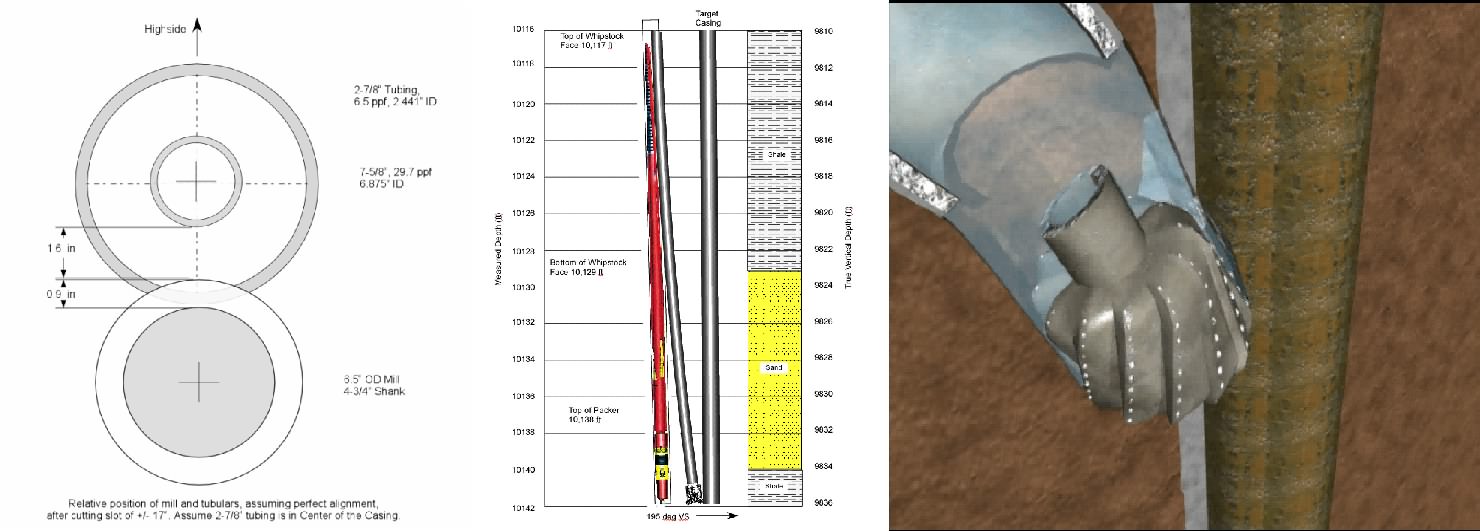|
Gulf of Mexico 2000

|
Problem:
A shrimp boat collided with a
single caisson oil well bending the conductor to a 30° angle with the
seabed. All casing strings and tubing were cracked and open to the sea above
the SSSV. The well presented an environmental hazard and would not be
possible to intervene if the SSSV were to fail short of drilling a relief
well. The well had to be made safe. |
| Remedial Strategy:
Recovery
was planned in two steps. First drill a relief well to intersect the problem
well above the production packer @ 9850 ft tvd. A notch would then be milled
into the 7-5/8� casing and mud circulated to the seabed followed by a 600 ft
cement plug. This would seal the annulus and protect the well from an
annular blowout. A 60� caisson would then be driven around the damaged
wellhead to a depth below the casing breaks. The damaged casing strings
would be removed and the 7-5/8� and tubing tied back to surface. The tubing
could then be bullheaded with kill fluid followed by cement for P&A. The
relief well would standby to severe the tubing and kill the well if a
problem occurred at surface. |
| Special Services:
John Wright Company (JWCO) was contracted to supervise the special services
for the relief well to include: pre-planning, on-site supervision,
directional drilling, surveying, casing detection, intersection and kill
hydraulics. Well Flow Dynamics provided hydraulic modeling, Vector Magnetics
provided electromagnetic ranging services and Gyrodata provided gyro surveys. All companies worked together with JWCO to create a single special
services team. |
Challenges: The project
was complicated by the following:
- The intersection depth was
tvd dependent with a short section above the production packer acceptable
for intersection.
- Timing was critical to
coordinate the surface operations with the relief well intersection.
Delays on the relief well would be costly due to the combined operations
with the surface team resources on standby.
- It was desired to cut a
notch in the casing but not cut the tubing inside. This required specific
incident angles and custom mill design to minimize this risk.
|
Results:
- The project was completed
according to plan without significant problems or delays.
- The special services team
was integrated seamlessly with the drilling team to create an effective
and efficient operation.
- The intersection was
executed using a casing whipstock due to a motor failure and subsequent
fish at the casing shoe.
- The notch was cut in the
casing using a custom mill on a standard steerable mud motor.
- Mud was circulated to the
seabed and a cement plug set as per design.
- The surface operations
proceeded as planned and the well was plugged and abandoned without
further incident.
|

